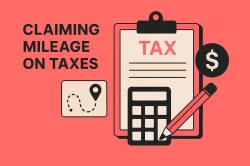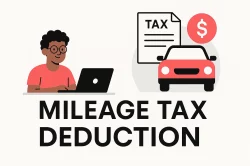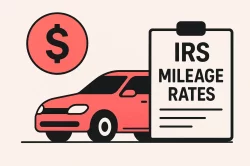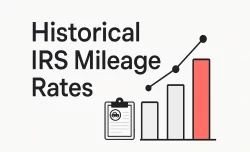Table of Contents
Moving mileage refers to the distance traveled during a move. It’s important because it affects your costs, how companies charge you, and even whether you can get money back on your taxes. Let’s break down what you need to know about moving mileage.
Understanding Moving Mileage: What It Is and How It Impacts Your Move
When you move, whether it’s across town or across the country, the distance between your old home and your new one is key. This distance, or moving mileage, directly impacts several things:
- Moving Company Costs: Professional movers often base their fees partly on mileage, especially for long-distance moves.
- Truck Rental Costs: If you rent a truck, you’ll likely pay a base rate plus a charge per mile you drive.
- Tax Deductions/Reimbursements: In certain situations, like for military moves, the number of miles counts towards possible tax benefits or reimbursements.
- Fuel Costs: The more miles you travel, the more gas you’ll need to buy.
So, figuring out the miles is a big first step in planning your move budget.
Who Can Claim Moving Mileage?
This is a key question for many people. Under current tax laws, most individuals cannot claim moving mileage or other moving expenses on their federal taxes. The Tax Cuts and Jobs Act changed the rules in 2018.
However, there’s an important exception: active-duty military personnel. If you are in the military and move because of a permanent change of station (PCS), you can usually deduct your qualified moving expenses, and this includes moving mileage.
So, if you’re not in the military, you likely won’t be able to claim moving mileage on your taxes. But if you are paying attention to your miles, it is important.
Military Moving Mileage: The MALT Rate
For military members, the moving mileage rate is called the Monetary Allowance in Lieu of Transportation, or MALT. As of 2024, the MALT rate is also 22 cents per mile. This rate applies whether you’re driving yourself or transporting dependents to a new duty station. The military uses this rate to figure out how much to reimburse you for driving your own car during a move. You can find updates on official military travel websites.
FAQ
What is moving mileage?
Moving mileage refers to the miles you drive when relocating your primary residence, either for a new job location or personal reasons, which may be deductible under certain IRS rules. Mainly used for military relocation.
When is moving mileage deductible?
You can deduct moving mileage only if your move meets IRS distance and time tests (generally moving at least 50 miles for a new job and working full-time for 39 weeks in the first year) and if you itemize deductions.
How can MileageWise help track moving mileage?
MileageWise automatically logs all trips—including long-distance moves—so you can easily separate and document your moving mileage with dates, routes, and purposes for accurate deduction claims. No need to worry about how to create a mileage log.
Try MileageWise for free for 14 days. No credit card required!
Related Terms

Introducing the Google Timeline to Mileage Log Mobile App
We’re excited to share our latest development! You can now convert your Google Maps Timeline drives directly into an IRS-compliant mileage log right on your

DoorDash Tips and Tricks: Your Edge Over Competition
Last Updated: November 17, 2025 I’m excited to share the top DoorDash tips and tricks shared by YouTuber Pedro “Mr.BetonYou” Santiago. He collected and vetted the

8 Uber and Lyft Scams Every Driver Should Know
Last Updated: November 9, 2025 Driving for Uber or Lyft can be a rewarding gig, offering flexibility and the chance to meet new people. However,
SherpaShare Shutdown – What To Do Now?
Last Updated: October 7, 2025 SherpaShare was a service designed primarily for people who work as independent contractors, particularly those in the ride-sharing and delivery
Gas Mileage Tracker: Your Key to Savings
Last Updated: August 8, 2025 A gas mileage tracker helps drivers watch their vehicle’s fuel use, mileage, and related costs. You might want one to
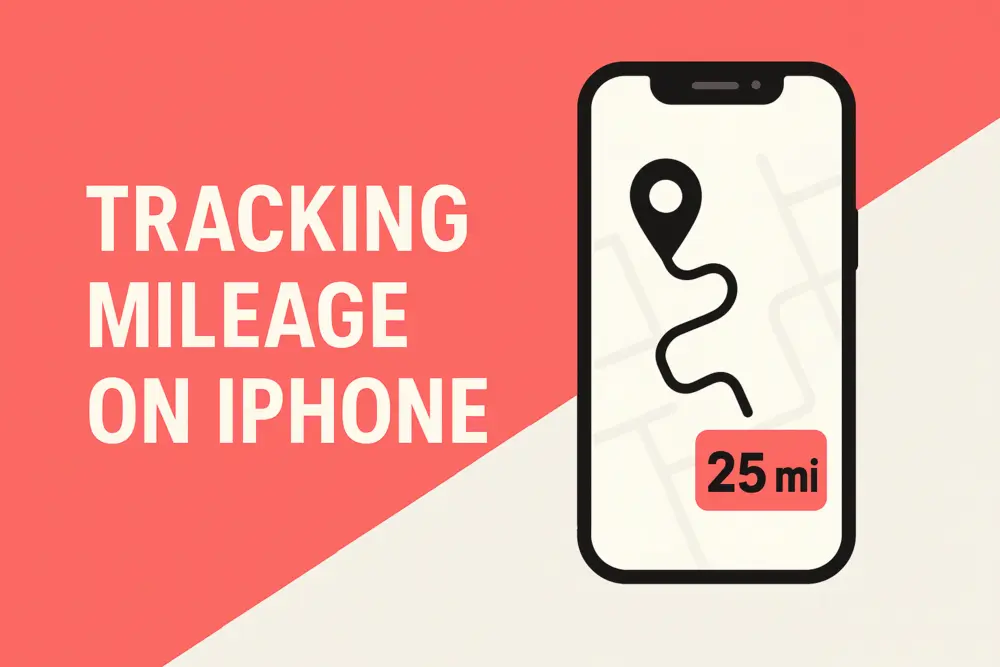
How To Track Miles on iPhone: Find your Match
Last Updated: August 6, 2025 Looking to track miles on your iPhone? Whether it’s for fitness, personal use, or business tax deductions, your iPhone offers
Related Guides


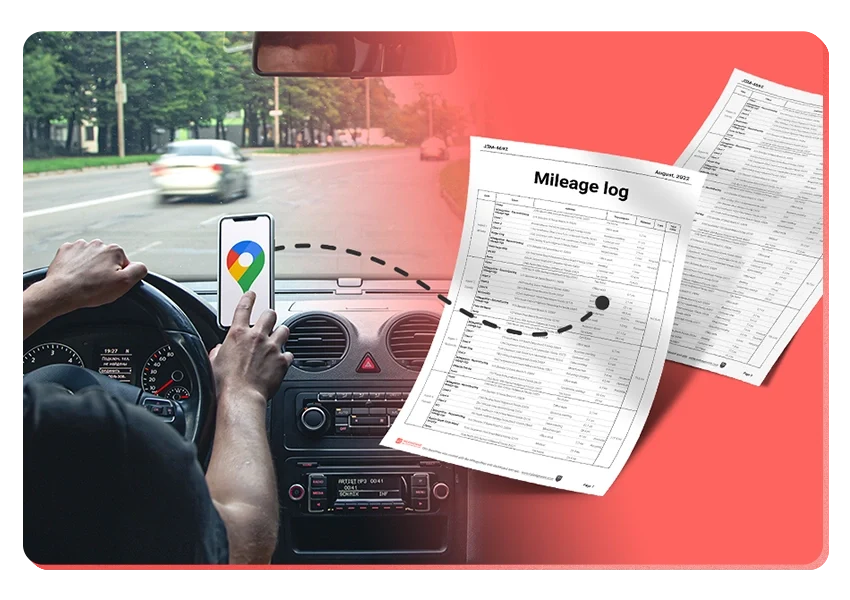
It’s Finally Here! Google Maps Timeline Import from Mobiles
Transform your Trip Lists into Mileage Logs with MileageWise

Introducing the Google Timeline to Mileage Log Mobile App
We’re excited to share our latest development! You can now convert your Google Maps Timeline drives directly into an IRS-compliant mileage log right on your

DoorDash Tips and Tricks: Your Edge Over Competition
Last Updated: November 17, 2025 I’m excited to share the top DoorDash tips and tricks shared by YouTuber Pedro “Mr.BetonYou” Santiago. He collected and vetted the

8 Uber and Lyft Scams Every Driver Should Know
Last Updated: November 9, 2025 Driving for Uber or Lyft can be a rewarding gig, offering flexibility and the chance to meet new people. However,
SherpaShare Shutdown – What To Do Now?
Last Updated: October 7, 2025 SherpaShare was a service designed primarily for people who work as independent contractors, particularly those in the ride-sharing and delivery
Gas Mileage Tracker: Your Key to Savings
Last Updated: August 8, 2025 A gas mileage tracker helps drivers watch their vehicle’s fuel use, mileage, and related costs. You might want one to

How To Track Miles on iPhone: Find your Match
Last Updated: August 6, 2025 Looking to track miles on your iPhone? Whether it’s for fitness, personal use, or business tax deductions, your iPhone offers

Introducing the Google Timeline to Mileage Log Mobile App
We’re excited to share our latest development! You can now convert your Google Maps Timeline drives directly into an IRS-compliant mileage log right on your

Was Your Google Timeline Deleted? Here’s What Happened:
Last updated: November 20, 2025 If you recently opened Google Maps and noticed your Timeline was deleted or partially missing, you’re not alone. In this

It’s Finally Here! Google Maps Timeline Import from Mobiles
Struggling to Manage Your Trips After Google’s Timeline Update? If you’re reading this, you’ve likely encountered the recent update affecting Google Maps Timeline. With Timeline
Transform your Trip Lists into Mileage Logs with MileageWise
Last Updated: October 1, 2025 Do you have a list of monthly trips from a data source like Excel or Google Timeline, but need to

How to Download Google Timeline Data: A Guide
Google Timeline Import Hub Last Updated: October 30, 2025 Want to download Google Timeline data? This guide shows you how to extract your location history

How to Export Google Maps Timeline: Get Your Data
Google Timeline Import Hub Last Updated: October 29, 2025 It can be tricky to export Google Maps Timeline data after Google’s recent updates. Many users
Google Maps Mileage Tracker: From Timeline to Mileage Log
Google Timeline Import Hub Last Updated: October 29, 2025 If you’re an active user of Google Maps Timeline you likely already know how convenient it
Timeero
Table of Contents Timeero Timeero is a time, location, and mileage tracking app designed for businesses and teams in the United States. It helps employers
Milewise by Allstate
Table of Contents Milewise by Allstate Milewise by Allstate is a pay-per-mile car insurance program offered by Allstate Insurance in the United States. It’s designed
Hurldr
Table of Contents Hurdlr Hurdlr is a finance and expense tracking app designed for self-employed professionals, freelancers, and gig workers in the United States. It



